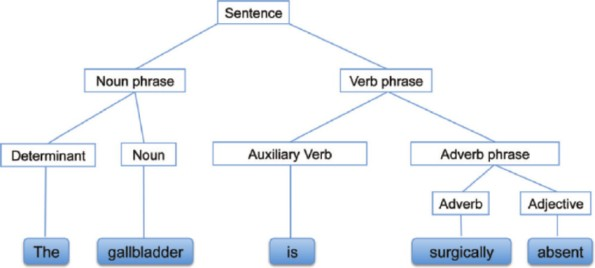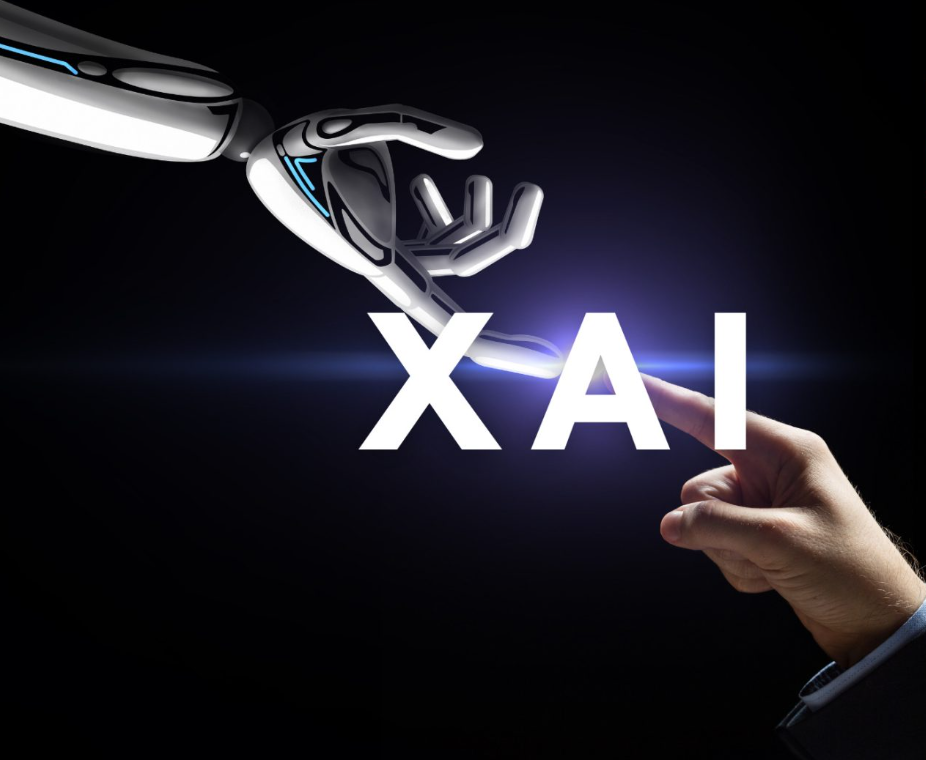Demystifying NLP: The Ultimate Guide to
Language Processing
This article delves into the core principles and methods of Natural Language Processing (NLP), illustrating its role in converting unprocessed text into valuable insights. Covering essential tasks such as tokenization, parsing, sentiment analysis, and machine translation, NLP spans various applications that are revolutionizing industries and improving interactions between humans and computers. Whether you're experienced in the field or just starting out, this overview aims to offer a thorough grasp of NLP and its importance in the contemporary digital landscape.
What is Natural Language Processing?
Natural Language Processing (NLP) represents a
branch of computer science within artificial intelligence focused on enabling
computers to comprehend human language. It draws from computational linguistics,
the study of how languages function, and utilizes statistical, machine
learning, and deep learning models. These technologies empower computers to
analyze and interpret textual or spoken data, capturing nuanced meanings
including the intentions and emotions conveyed by speakers or writers.
NLP drives a multitude of applications that
interact with language, such as text translation, voice recognition, text
summarization, and chatbots. Many people encounter these applications daily,
such as voice-controlled GPS systems, digital assistants, speech-to-text
software, and automated customer service agents. Moreover, NLP aids businesses
in enhancing efficiency, productivity, and performance by streamlining complex
language-based tasks.
NLP encompasses a diverse range of techniques
aimed at enabling computers to process and comprehend human language. These
techniques can be categorized into several broad areas, each addressing
different aspects of language processing.
How does NLP function?
Natural Language Processing (NLP) integrates
computational linguistics with machine learning and deep learning techniques to
process and understand human language. Computational linguistics, a branch of
linguistics that employs data science methodologies, plays a crucial role by
analyzing language and speech through two main types of analysis:
1.
Syntactical Analysis: This
type of analysis focuses on the structure of language. It involves parsing
sentences to understand the arrangement of words and applying predefined rules
of grammar to determine how words relate to each other syntactically. For
example, identifying subjects, objects, verbs, and their roles in a sentence.
2. Semantical Analysis: After syntactical analysis, semantical analysis interprets the meaning derived from the syntactic structure. It involves understanding the semantics or meaning of words, phrases, and sentences within their context. This step goes beyond syntax to infer deeper meanings and understand the intentions conveyed by language.
Together, these analyses enable NLP systems to
comprehend and process human language in various applications, such as
sentiment analysis, machine translation, question answering, and more. By
combining computational linguistics with advanced machine learning models, NLP
continues to advance capabilities in understanding and generating natural
language, making it a fundamental technology in modern AI applications.
Deep Learning Models and NLP
In recent years, deep learning models have
revolutionized Natural Language Processing (NLP) by leveraging vast amounts of
raw, unstructured data—both text and voice—to achieve unprecedented accuracy.
Deep learning represents a significant evolution from traditional statistical
methods in NLP, employing neural network architectures that excel at learning
complex patterns and relationships in language data. Here's an overview of key
subcategories of deep learning models in NLP:
Sequence-to-Sequence (seq2seq) Models
Description: Built on recurrent neural
networks (RNNs), seq2seq models are designed to transform input sequences into
output sequences. They have been notably successful in tasks like machine
translation, where they convert phrases from one language to another.
Example Application:
Translating a sentence from German to English using a neural network model.
Transformer Models
Description: Transformer models revolutionized NLP by introducing mechanisms
like self-attention, which allow them to capture dependencies and relationships
between different parts of language sequences more effectively than RNN-based
models.
Key Feature: They tokenize language by breaking it into tokens (words or
subwords) and utilize self-attention to understand relationships between these
tokens.
Landmark Model: Google's Bidirectional
Encoder Representations from Transformers (BERT) significantly advanced
understanding and application of transformer models, including their use in
search engine operations.
Autoregressive Models
Description: Autoregressive models are a type of transformer model
specifically trained to predict the next word in a sequence. This capability
has greatly enhanced the ability to generate coherent and contextually appropriate
text.
Examples: Models like GPT (Generative
Pretrained Transformer), Llama, Claude, and open-source alternatives such as
Mistral exemplify autoregressive language generation models.
Foundation Models
Description: These are prebuilt and
curated models that serve as a foundational starting point for NLP projects,
accelerating deployment and fostering confidence in their performance across
various industries.
Application Areas:
Foundation models like IBM Granite™ support diverse NLP tasks such as content
generation, insight extraction, and named entity recognition (identifying and
extracting key information from text).
Advanced Capability: They
facilitate retrieval-augmented generation, a technique that enhances response
quality by incorporating external knowledge sources during text generation.
These deep learning advancements have
significantly broadened the scope and capabilities of NLP, enabling
applications that range from conversational AI and sentiment analysis to complex
language understanding tasks in business and research domains. As deep learning
continues to evolve, its impact on NLP is expected to drive further innovations
in AI-driven language processing technologies.
Applications of NLP
Natural Language Processing (NLP) finds application
across various domains and industries, leveraging its ability to process and
understand human language. Here are some key applications of NLP:
Machine Translation: NLP powers systems that translate text from one language to
another, enabling seamless communication across linguistic barriers. Examples
include Google Translate and DeepL.
Sentiment Analysis: NLP algorithms analyze text to determine the sentiment expressed
(positive, negative, neutral). This is valuable for understanding customer
feedback, social media monitoring, and market research.
Chatbots and Virtual Assistants: NLP is used to develop chatbots and virtual assistants that can
understand and respond to user queries and commands in natural language.
Examples include Siri, Alexa, and customer service chatbots.
Information Extraction: NLP techniques extract structured information from unstructured
text, such as identifying names of people, organizations, dates, and other key
entities. This aids in tasks like content categorization and data mining.
Text Summarization: NLP algorithms generate concise summaries of longer texts,
preserving key information and aiding in information retrieval and document
analysis.
Question Answering Systems: NLP enables systems to understand and respond to natural language
questions by extracting relevant information from text sources. Examples
include IBM Watson's question answering capabilities.
Speech Recognition: NLP techniques are used in speech recognition systems to convert
spoken language into text, enabling applications like voice-operated assistants
and speech-to-text software.
Named Entity Recognition (NER): NLP identifies and categorizes named entities (e.g., names of
people, places, organizations) within text, which is useful for information
retrieval and data analysis.
Automatic Text Generation: NLP models can generate coherent and contextually relevant text
based on input prompts, supporting applications like content generation and
personalized recommendations.
Language Modeling: NLP models predict the next word in a sequence of text, enabling
autocomplete features in search engines and improving text generation
capabilities.
These applications demonstrate the versatility
and importance of NLP in enabling machines to interact with and understand
human language, impacting fields ranging from healthcare and finance to
customer service and education.
Industries Using NLP
Natural Language Processing (NLP) technologies
are widely adopted across various industries due to their ability to automate
tasks, extract valuable insights from data, and enhance user interactions. Here
are some industries where NLP is prominently used:
Healthcare: NLP is used for clinical documentation improvement, extracting
information from medical records, analyzing patient sentiments from feedback,
and supporting medical research by mining vast amounts of literature.
Finance: In
finance, NLP is applied for sentiment analysis of market news and social media,
automated trading based on news sentiment, customer service chatbots for
banking, and analyzing financial reports and documents.
Customer Service: NLP powers chatbots and virtual assistants that handle customer
queries, automate responses, and provide personalized customer support across
various sectors, including retail, telecommunications, and hospitality.
E-commerce: NLP enhances product recommendations based on customer
preferences and reviews, optimizes search functionalities to improve product
discovery, and automates customer service interactions.
Marketing and Advertising: NLP is used for sentiment analysis of brand mentions and customer
feedback on social media, generating marketing content, optimizing ad targeting
based on customer behavior and interests, and analyzing market trends.
Education: NLP
supports personalized learning platforms, automated grading and feedback
systems, content recommendation engines for e-learning platforms, and analyzing
educational content for insights.
Legal: NLP
aids in legal document analysis, contract review, e-discovery (identifying
relevant documents for legal cases), and legal research by processing and
extracting information from large volumes of legal texts.
Government and Public Sector: NLP is used for analyzing public opinion and sentiment from
social media, processing citizen feedback and complaints, automated translation
of multilingual documents, and improving accessibility of government services.
Media and Entertainment: NLP powers content recommendation systems for streaming
platforms, sentiment analysis of audience reactions and reviews, generating
subtitles and captions, and analyzing viewer engagement.
Insurance: NLP
supports claims processing by analyzing and extracting information from claim
documents, customer service automation through chatbots, and analyzing customer
feedback to improve services.
These examples illustrate how NLP technologies
are applied across diverse sectors to automate tasks, improve decision-making
processes, and enhance user experiences by leveraging the power of natural
language understanding and generation.
Future of NLP
The future of Natural Language Processing (NLP)
is poised for significant advancements driven by ongoing research,
technological innovations, and increasing demand across various industries.
Here are some key trends and developments that indicate the future direction of
NLP:
Contextual Understanding: NLP systems are evolving towards deeper contextual understanding
of language. This includes understanding nuances, context shifts, and implicit
meaning in conversations, which is crucial for applications like virtual
assistants and chatbots.
Multimodal NLP: Integration of NLP with other modalities such as vision (images
and videos) and audio (speech recognition) to create more holistic and
comprehensive AI systems. This enables applications like automatic video
captioning and interactive multimedia content analysis.
Continual Learning: NLP models will increasingly adopt techniques for continual
learning and adaptation, allowing them to dynamically update and improve based
on new data and user interactions. This is essential for maintaining relevance and
accuracy over time.
Ethical AI and Bias Mitigation: Addressing ethical considerations, including bias in NLP models
and datasets, to ensure fairness, transparency, and inclusiveness in AI
applications across diverse populations and languages.
Advanced Generative Models: Further advancements in generative models, such as autoregressive
models and transformer-based architectures, for tasks like text generation,
dialogue systems, and creative content creation.
Domain-Specific Applications: Tailoring NLP models and techniques for specific domains such as
healthcare, finance, legal, and scientific research to meet industry-specific
needs and regulatory requirements.
Zero-shot and Few-shot Learning: Improving the ability of NLP models to generalize across tasks
and adapt to new tasks with minimal labeled data, enabling more efficient and
scalable deployment in real-world applications.
Explainable AI: Enhancing the interpretability and explainability of NLP models
to provide transparent reasoning and insights, particularly in critical
applications such as healthcare diagnostics and legal decision support.
Conversational AI: Advancements in natural language understanding and generation to
create more human-like and engaging conversational AI systems for customer
service, education, and personal assistants.
Global Accessibility: Increasing accessibility of NLP technologies across languages and
cultures through improved multilingual models, translation capabilities, and
support for diverse linguistic variations.
Overall, the future of NLP promises to reshape
how we interact with technology and leverage vast amounts of textual data to
drive innovation and enhance human-machine interactions across various domains.
As research and development in NLP continue to accelerate, these advancements
will unlock new possibilities and applications, paving the way for more
intelligent and adaptive AI systems.
Sources: oracle.com,
ibm.com, geeksforgeeks.org,
Wikipedia.com,
Compiled by: Shorya Bisht



No comments:
Post a Comment